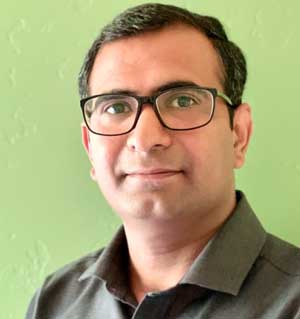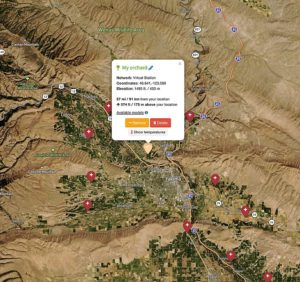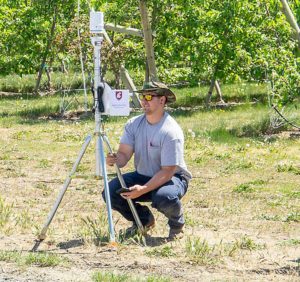
Washington State University announced that professor Lav Khot will serve as interim director for AgWeatherNet, the system of weather stations and climate data tools that support growers across the state.
Khot, an associate professor at WSU’s Center for Precision and Automated Agricultural Systems (CPAAS), said the new role will build on his experience with in-field climate sensing technology, and he hopes to continue AgWeatherNet’s momentum in adopting new technology.
“The sensing technology is getting better and can provide a lot more data to growers,” he said.
Khot replaces David Brown, an associate professor of soil science who led AgWeatherNet over the previous 2 ½ years and pushed for modernizations of the university’s equipment and new ways to partner with privately owned stations. Brown and Khot have several research collaborations in the works around advanced frost risk modeling and the relationship between in-canopy conditions and the conditions in open fields where weather stations are typically located.
“Lav has very extensive experience developing crop and in-field environment sensing technologies to monitor and manage crop stressors. He plans to continue the effort to modernize the open and in-field weather stations with an eye on both data quality and maintenance costs,” said Scot Hulbert, WSU associate dean and director of the College of Agriculture, Human, and Natural Resource Sciences (CAHNRS) Office of Research, in an email. “With a primary focus on collecting and delivery of quality weather data, he also plans to find synergies within WSU CAHNRS programs and regional agribusiness industries to collaboratively develop stakeholder need-driven weather data products.”
Khot also plans to work with entomology professor Dave Crowder, the new director of WSU’s Decision Aid System, which uses weather data to guide pest management decisions. As DAS relies on AgWeatherNet data for its models, Khot said he wants to increase weather station coverage in the areas most needed by DAS users.
Hulbert said CAHNRS leadership supports Khot’s and Crowder’s efforts to find opportunities for collaboration around integration of private, or tier 3 weather stations, how to harness emerging sensor technologies, and offer more data fusion.
Khot said he hopes to foster collaboration between the programs and other researchers at WSU, such as his CPAAS colleagues interested in using climate data to solve problems for the agriculture industry.
“I want to highlight that there will be more synergy between AgWeatherNet, DAS and CPAAS,” Khot said. “I think as we collaborate, there will be more tools developed for the growers than if we go it alone.”
—by Kate Prengaman








Leave A Comment